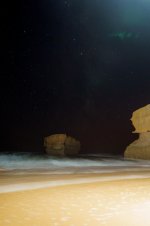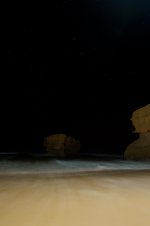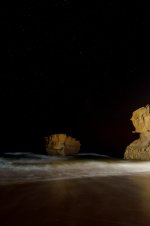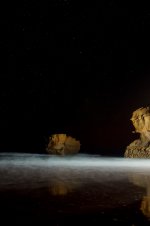C
Chavezshutter
New member
- Feb 4, 2022
- 142
- 194
- Location
- Australia
- Camera type
- Mirrorless camera
- Camera sensor
- Full-frame
- EXIF
- 4 photos stacked in Sequator - ISO 2500, F/2.8, 15 seconds, 4 photos foreground and light painting - ISO 2500, F/4.5, 10 seconds. Composited in Photoshop and final edit in Lightroom
Hi😁 ,
I have been kept busy completing this composite. I had already posted what I thought would be my base star image in another thread but as Andy Smith pointed out, I had a little coma in my stars near the bottom right of the frame, so I found another set of frames to create another Sequator stack, this stack still has some coma but its less than my first stack. I am under the 500 rule by 5 (10 apparently) seconds so the coma effect is a little strange 😕 but anyways, let's continue.
Andy Smith pointed out, I had a little coma in my stars near the bottom right of the frame, so I found another set of frames to create another Sequator stack, this stack still has some coma but its less than my first stack. I am under the 500 rule by 5 (10 apparently) seconds so the coma effect is a little strange 😕 but anyways, let's continue.
Foolishly, I later changed my settings while shooting and that meant that when I shot my dark frames they did not match amd couldnt be used in the stacking - had to manually try to clean hot pixels, which took some time. The foreground and rocks were painted from 4 photos and I had the choice to use any of the 4 foregrounds for this final edit, I picked the foreground which gave me some faint leading lines, which I then enhanced using dodge and burn. The other advantage of this technique is being able to control the light painted light individually in each layer by using layer opacity in Photoshop. I wanted to light the rock on the right edge a little more but it was drawing the eye away too much and I decided to keep it darker. I hope you like it..
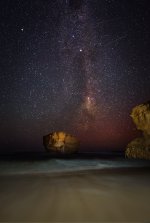
I have been kept busy completing this composite. I had already posted what I thought would be my base star image in another thread but as
Foolishly, I later changed my settings while shooting and that meant that when I shot my dark frames they did not match amd couldnt be used in the stacking - had to manually try to clean hot pixels, which took some time. The foreground and rocks were painted from 4 photos and I had the choice to use any of the 4 foregrounds for this final edit, I picked the foreground which gave me some faint leading lines, which I then enhanced using dodge and burn. The other advantage of this technique is being able to control the light painted light individually in each layer by using layer opacity in Photoshop. I wanted to light the rock on the right edge a little more but it was drawing the eye away too much and I decided to keep it darker. I hope you like it..

Last edited:
